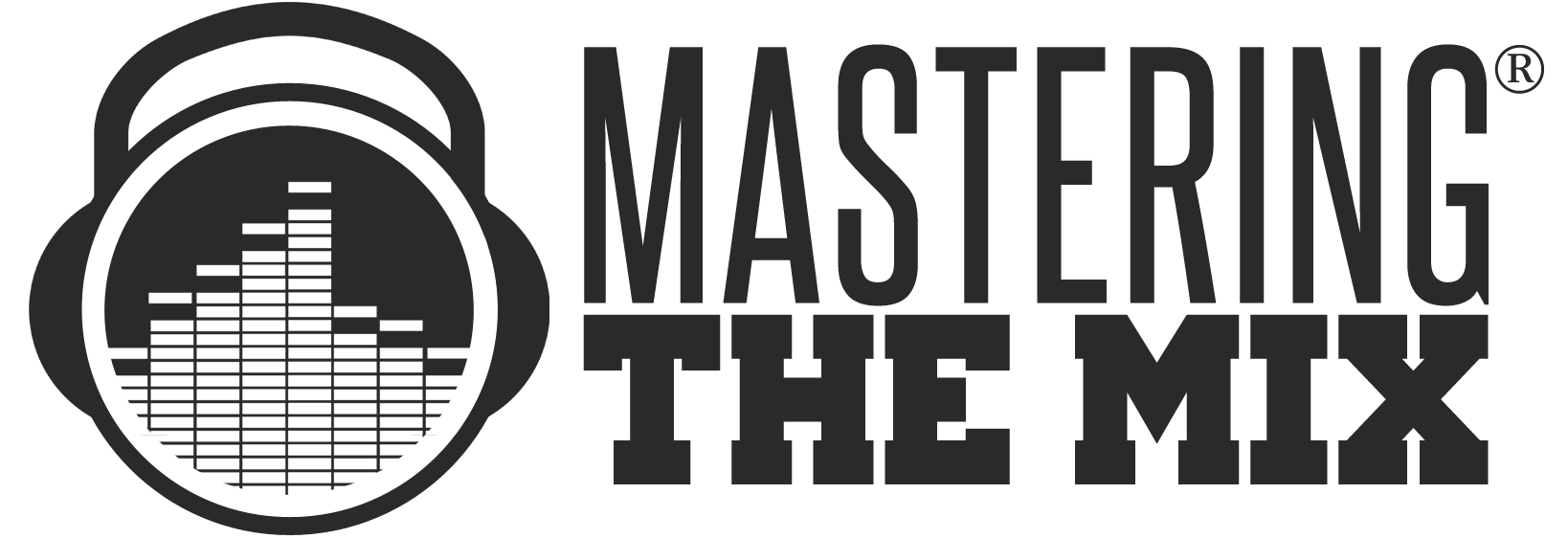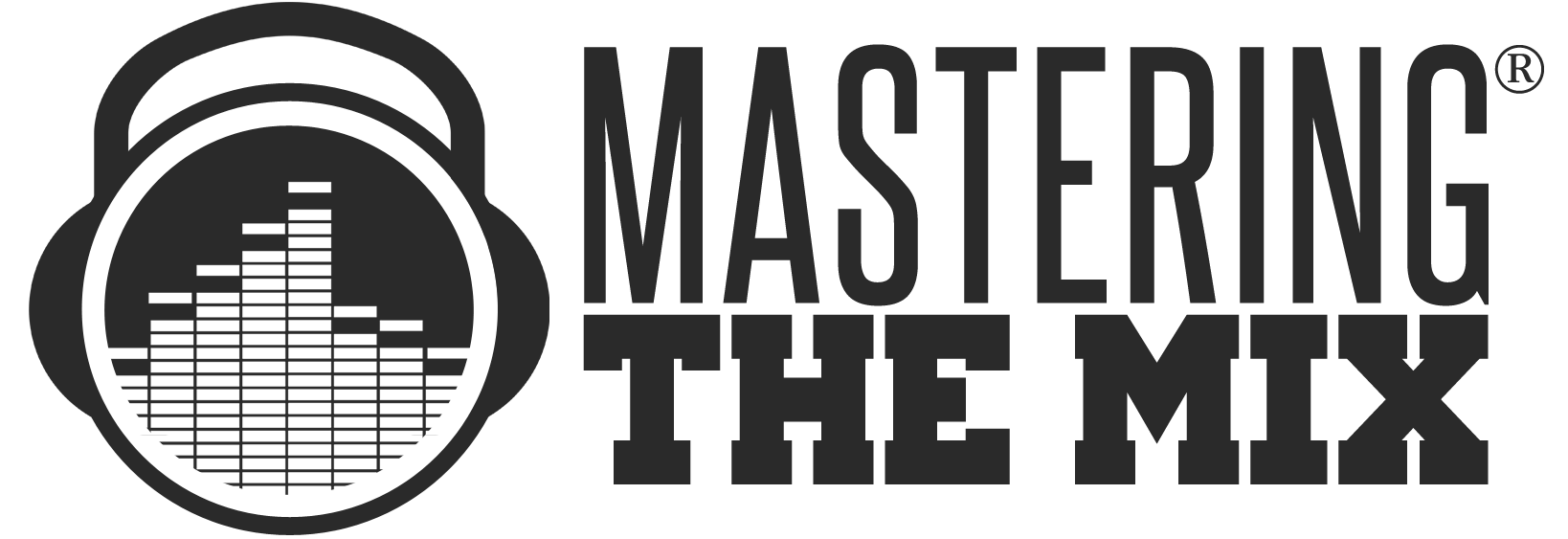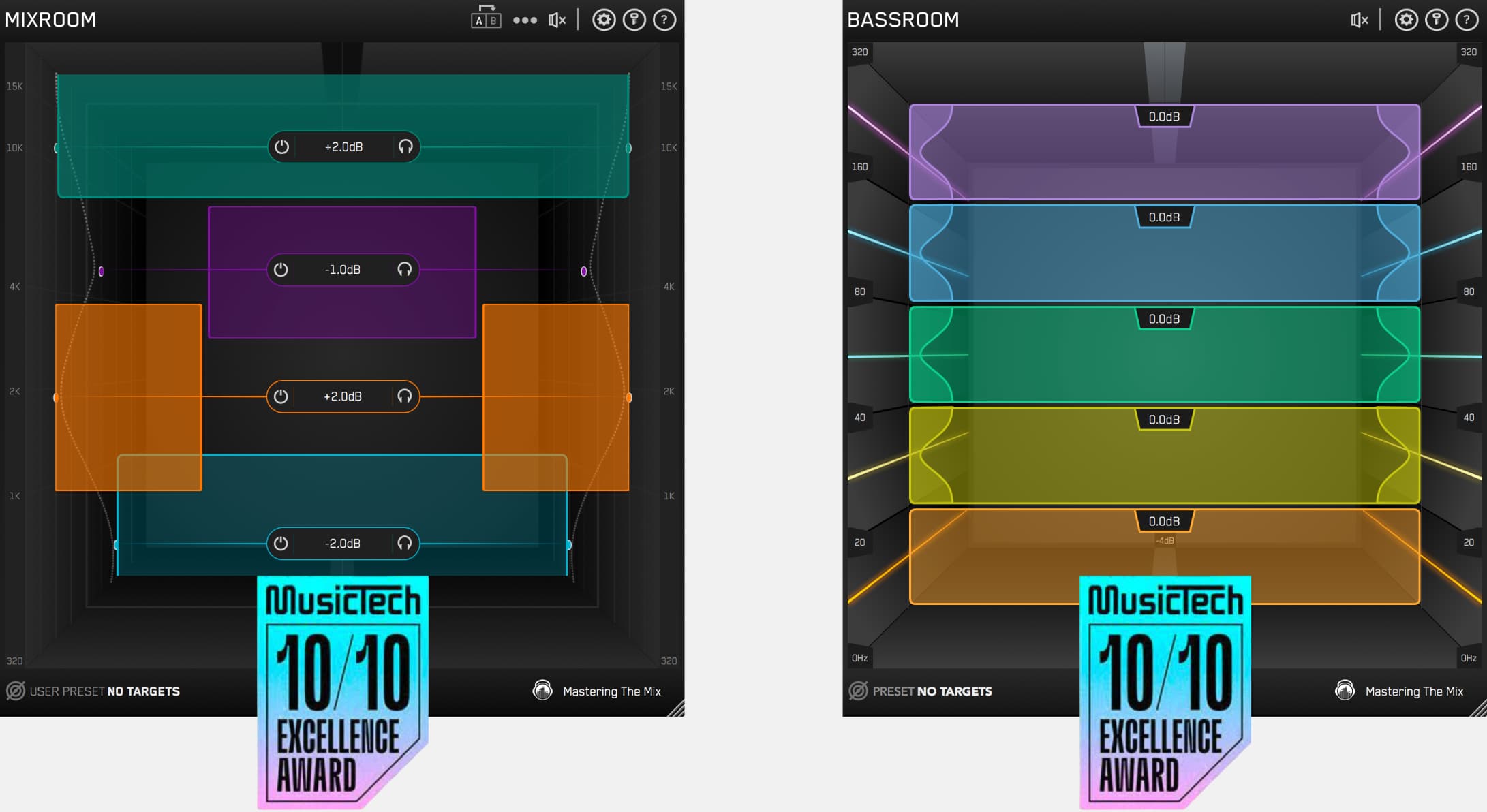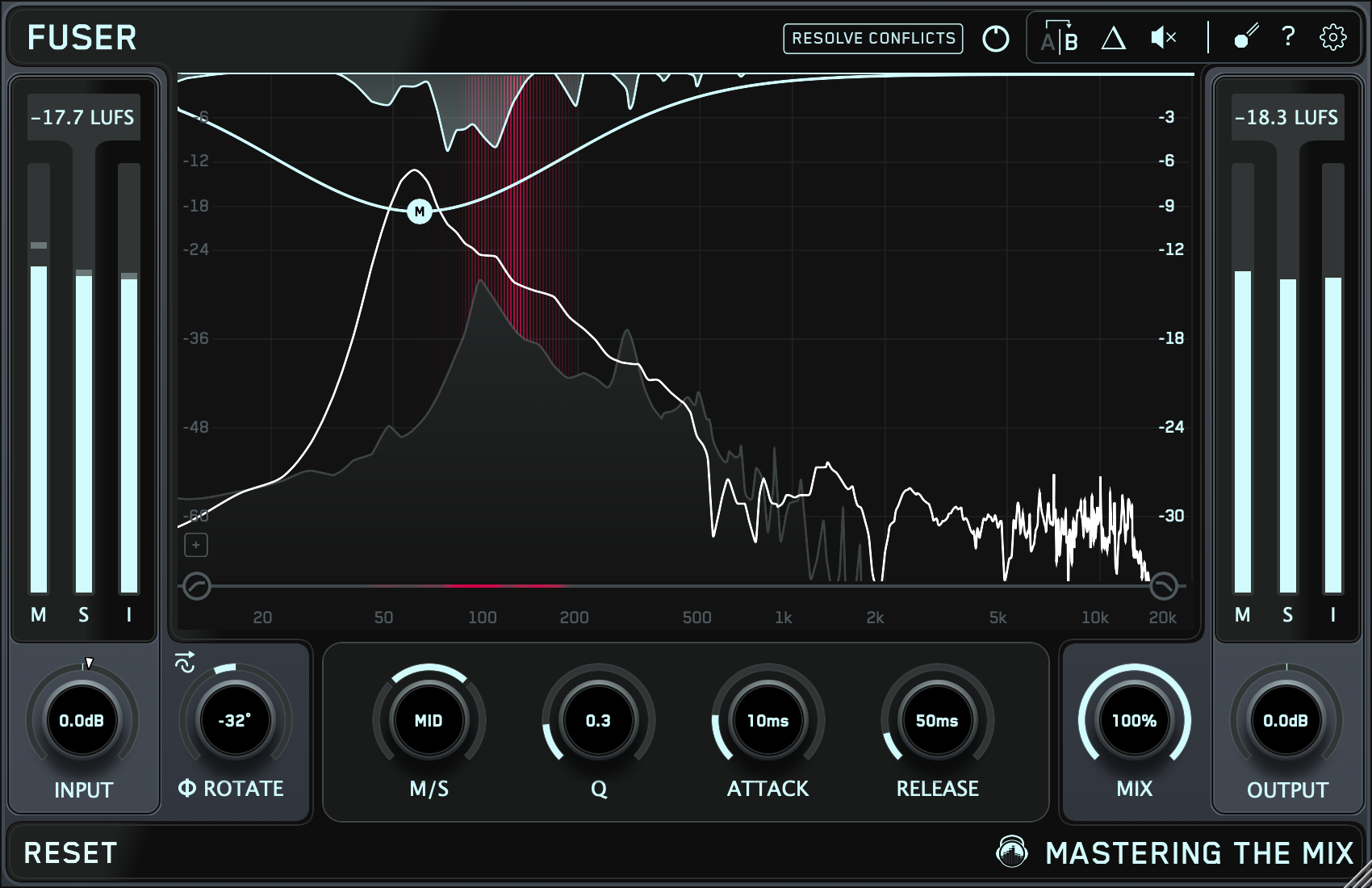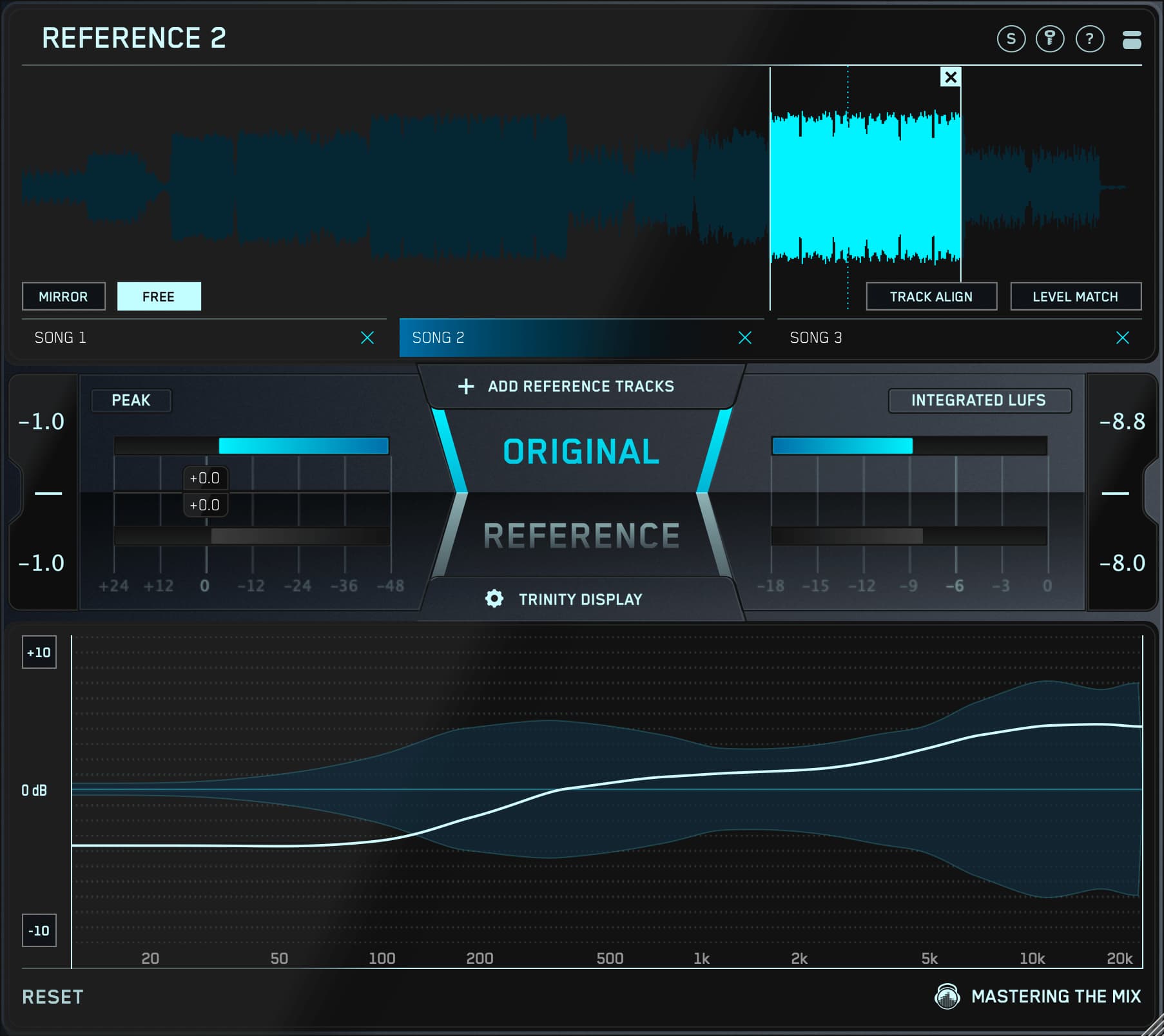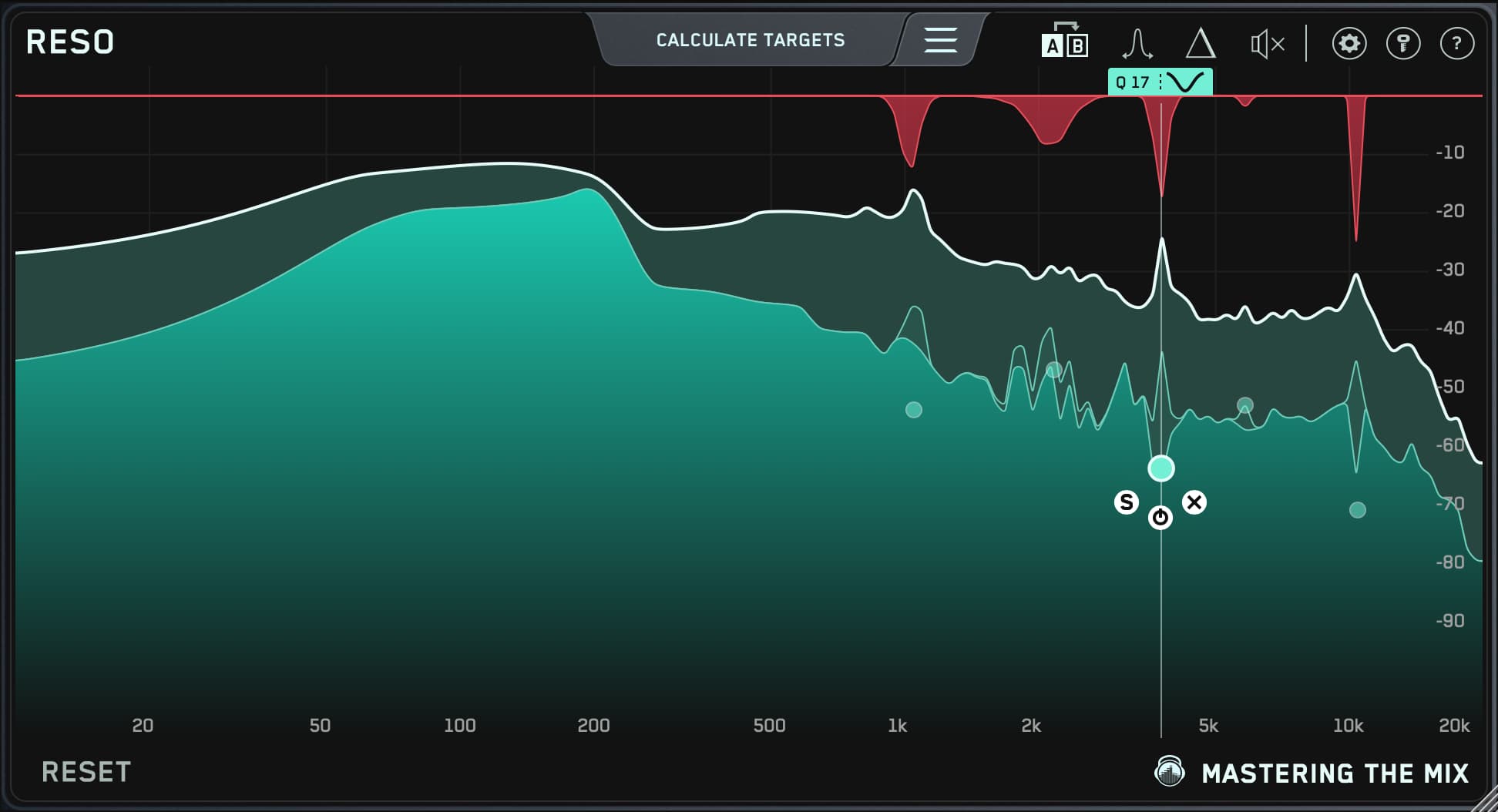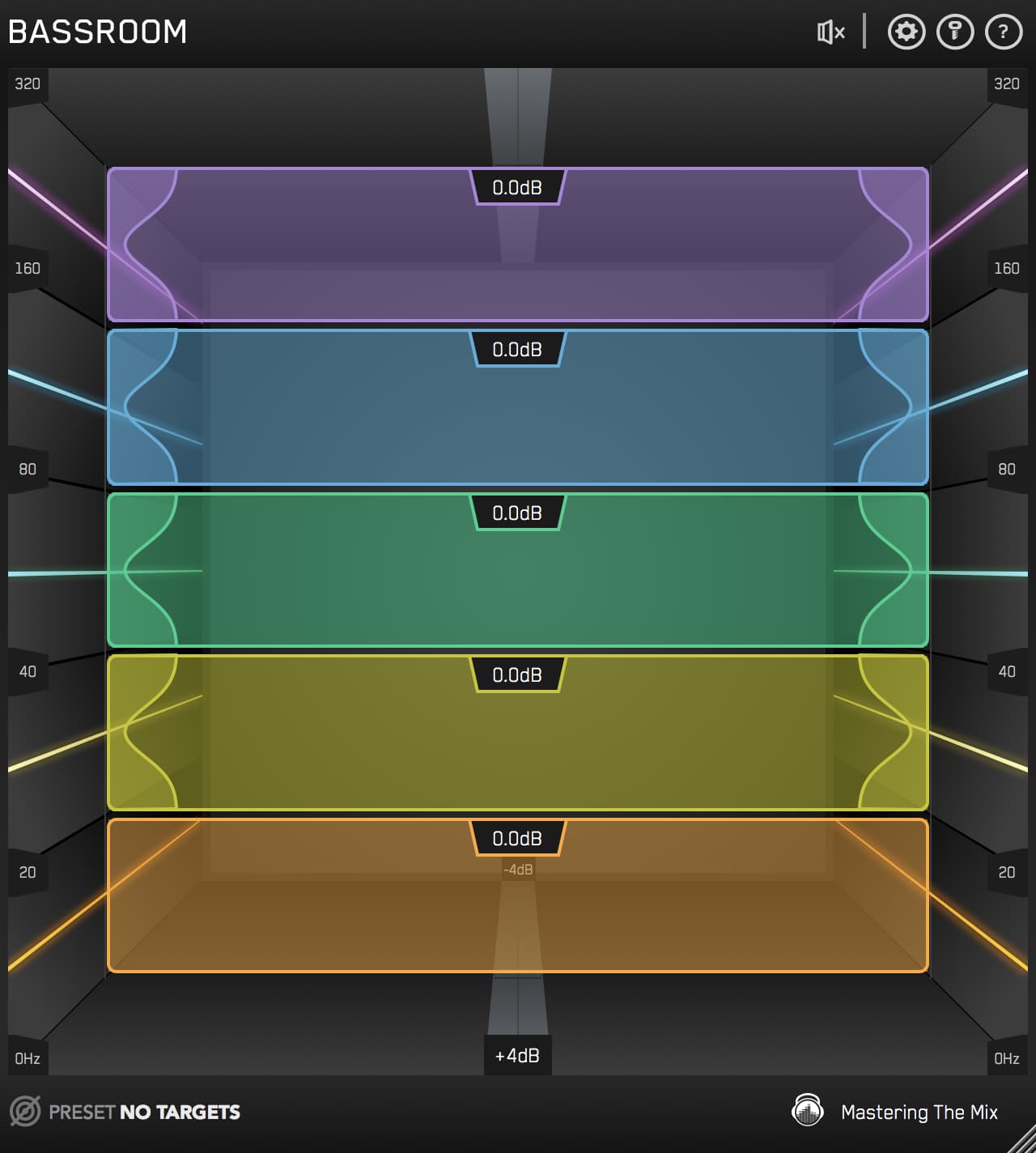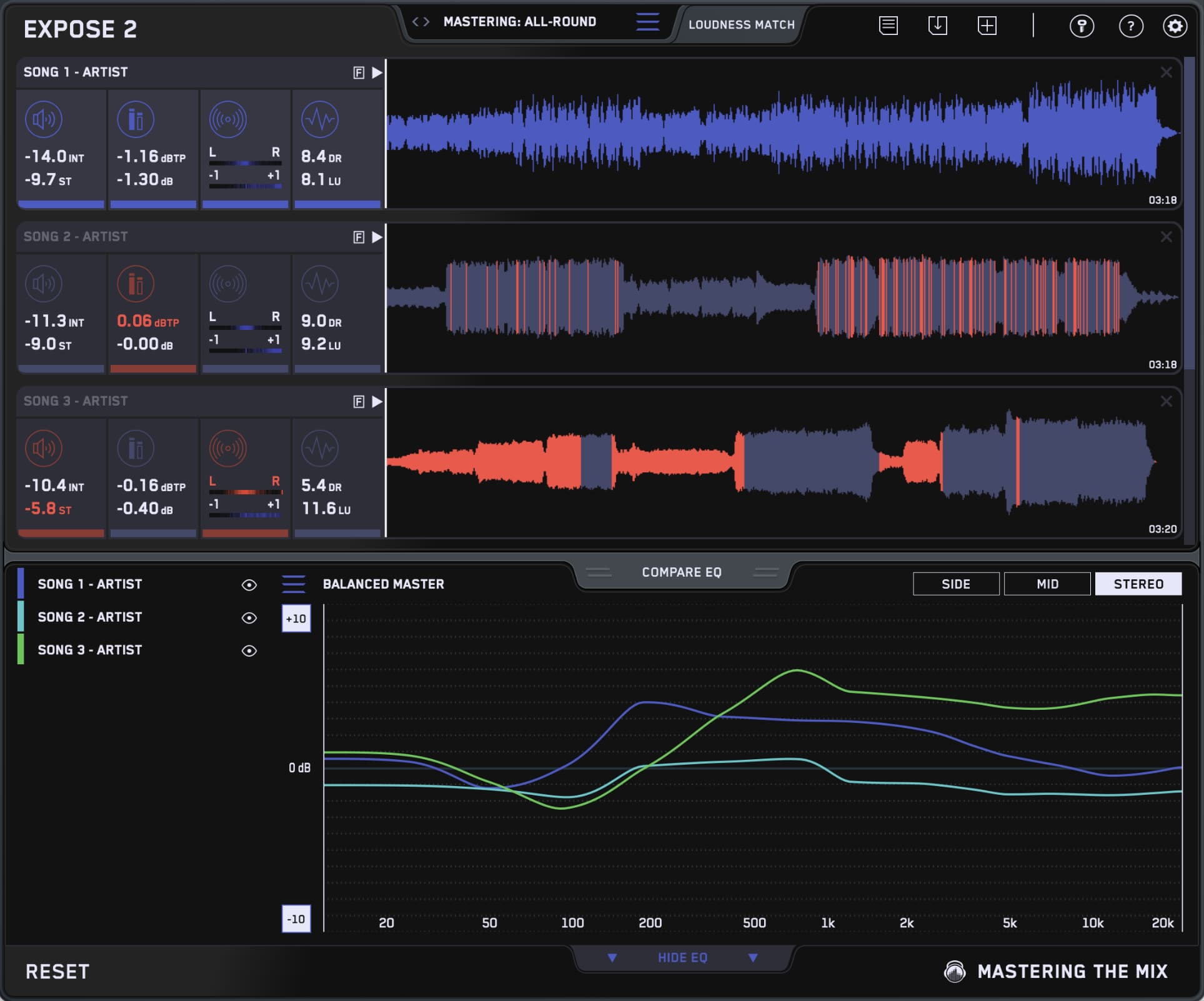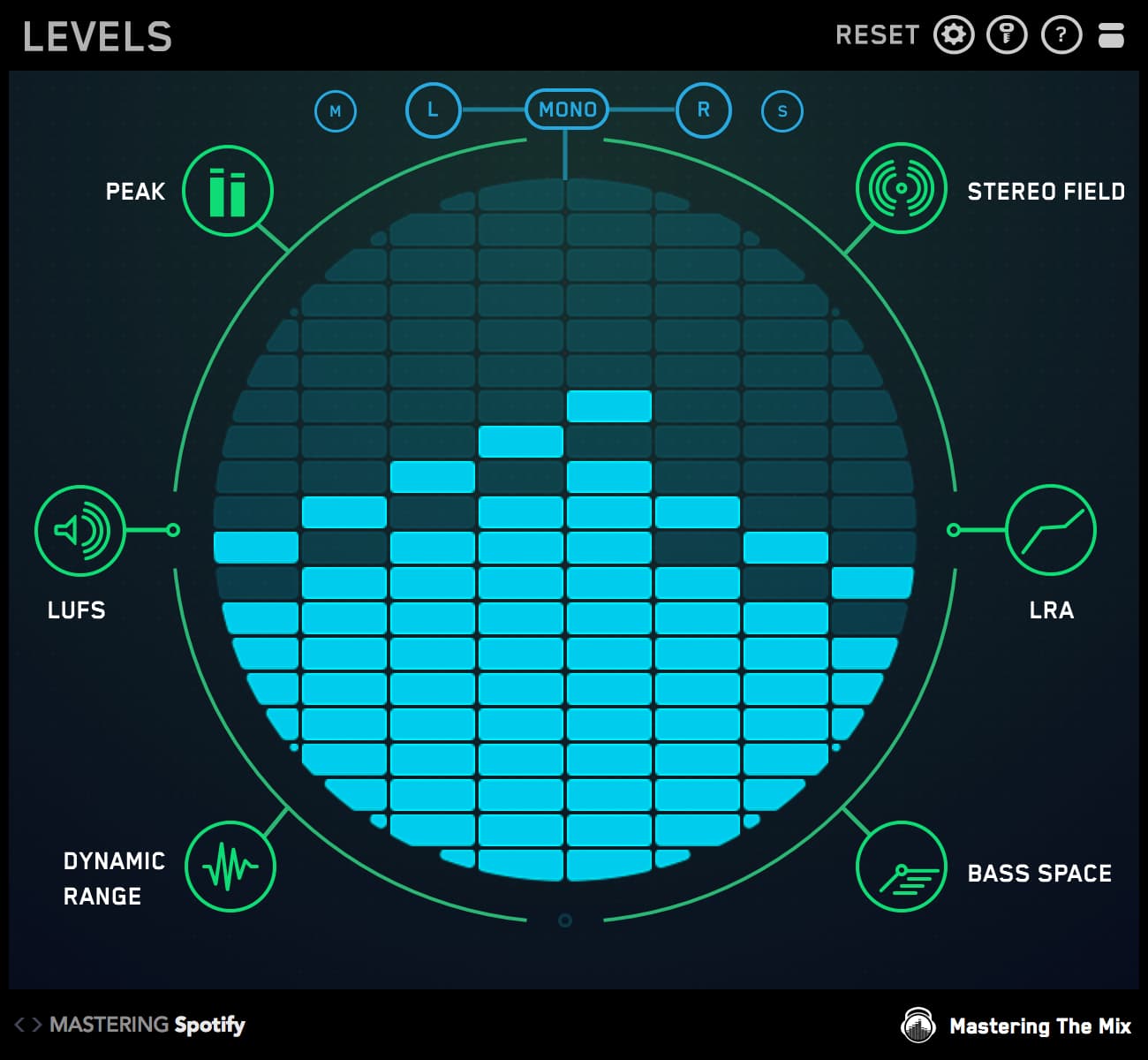For most people, the audible hearing spectrum ranges from about 20 Hz to 20 kHz. That’s roughly 20,000 different frequencies to deal with in any given track—from the deepest kick drum the brightest cymbals and strings.
Thankfully, by breaking the full frequency spectrum into smaller frequency ranges, we can easily control the different elements of any mix. In this blog, we’ll break down each of the frequency ranges using BASSROOM and MIXROOM to help you dial in the perfect tone for any instrument or quickly correct frequency problems in your mix.
 Sub-Bass: 20 to 60 Hz
Sub-Bass: 20 to 60 Hz
The sub-bass range is the lowest audible frequency range and is home to the deepest instruments in the mix. Typically reserved for bass guitars (which extend down to 40 Hz), synths, and the occasional kick drum sample, this range is “more felt than heard.”
That’s a common phrase in the audio world, but what does it mean? The short answer is—it’s that feeling you get at a live show when the bass drops and you feel it in your chest.
However, there is a more technical answer. According to the equal-loudness contour, the human ear hears different frequencies at different levels. Our ears are extremely sensitive to the 1-6 kHz range, which is why we can hear people clearly when they whisper.
However, our ears are least sensitive to frequencies below 100 Hz. That means sounds in this frequency range must be significantly louder than others in order for us to hear them. In fact, they have to be so loud we can physically feel the air vibrating.
That’s why it’s so important to be careful when boosting this frequency range. While it can make your mixes sound bigger and more powerful, too much can make it sound boomy.
For most instruments, you should use a high-pass filter to remove this frequency range in order to reduce unwanted rumble and make room for the bass instruments. Just be careful—if your mix doesn’t have enough information in this range it can sound weak and thin.
 Bass: 60 to 250 Hz
Bass: 60 to 250 Hz
The bass range is where most of the fundamental frequencies of the rhythm section reside. This can be a complicated range to work with. You need to find space for the meat of the kick and bass, along with the bottom of the snare and guitars—and don’t even get me started on the tom-toms.
Too much in this area quickly causes muddiness, but you must be careful not to cut this range from all of your tracks or your mix will sound thin. When balanced correctly, this range should add warmth and fastness to your tracks.
Since this range is still pretty low on the frequency spectrum, you have a bit of room to play with in terms of sculpting your tone. With lower frequencies, you can use a low Q value (or a broad bell) to pinpoint specific frequencies.
While this approach always works well when cutting, you can also use it to boost the fundamental note of an instrument without affecting the whole frequency range.
Low-Mids 250 to 500 Hz
This is another tricky range to mix. Too much in this frequency range and your mix will sound muffled or boxy—not enough and it will sound hollow or empty.
Occasionally, it can be helpful to make a small boost in this range to help fatten up snare drums or guitars. It can also work wonders when trying to get a bass guitar to cut through small speakers.
But in most cases, you’ll want to gently scoop out a bit of this range to help improve the clarity of your mix. This can also help add punch to percussive tracks and prevent masking problems.
 Midrange: 500 Hz to 2 kHz
Midrange: 500 Hz to 2 kHz
The midrange can make or break a track. This is where the fundamental frequencies of most instruments will sit in your mix, which is why it’s so important to treat this range carefully.
For bass instruments, this frequency range adds harmonics that can help cut through the mix. Too much around 500 Hz can make your mix sound boxy, but not enough and the track feels thin.
Try boosting 700 - 900 Hz on the bass guitar to help add clarity without muddying up the low end. Just be careful—too much and your tracks can start to “honk.”
On higher-pitched instruments, this range tends to sound “cheap” and carries a lot of unwanted room tones. Instead, try boosting the 1 - 2 kHz range to add bite to lead tracks. Boosting too much can quickly make your mix sound “tinny.”
With vocal tracks, cutting the 1 - 2 kHz range can help reduce some of that unwanted nasal sound. Of course, cutting too much in this range can reduce clarity, so tread lightly.
 High-Mids: 2 to 6 kHz
High-Mids: 2 to 6 kHz
Our ears are especially sensitive to this frequency range, so pay close attention and make sure nothing sounds overpowering in this area—especially the vocal.
This is the fundamental frequency range for the vocal, as well as the primary attack sound for percussive instruments. Boosting this range can help tracks jump out of the speakers, but it can also cause listener fatigue.
Boosting around 3 kHz is a great way to enhance the attack of almost any instrument—from drums and guitars to keys and vocals. It’s also a great way to add clarity to your mix.
Boosting too much in this range can cause tracks to sound harsh or edgy, and in the case of vocals, it can exaggerate sibilance. If you find that your vocal lacks presence, but boosting this range sounds harsh, try cutting this range on other instruments like the guitar. This is a great way to carve out space for the vocal.
This can be a tricky range to mix, as the vocals, guitars and drums are all fighting for attention in a relatively small space. When in doubt, always give way to the vocal and boost a different frequency range on the other tracks.
 Highs: 6 kHz to 20 kHz
Highs: 6 kHz to 20 kHz
This range is often referred to as “brilliance” or “air” because the only frequencies this high are harmonics, which tend to sparkle.
Watch out for sibilance or harshness around 6 - 8 kHz and remove it with a narrow band EQ or de-esser.
For a modern, hi-fi sound, try using a high shelf to boost everything above 12 kHz. This is a great way to apply a final “sheen” to your mix bus. Just be careful, as too much in this frequency range can sound piercing or shrill.
For a warm, vintage tone, use a high-shelf filter to gently roll off the highs. Listen carefully, as rolling off too much top-end can cause your mix to sound dull or flat.
 Now that you understand the different frequency ranges, try using BASSROOM and MIXROOM on your next track to dial in the perfect EQ curve!
Now that you understand the different frequency ranges, try using BASSROOM and MIXROOM on your next track to dial in the perfect EQ curve!
